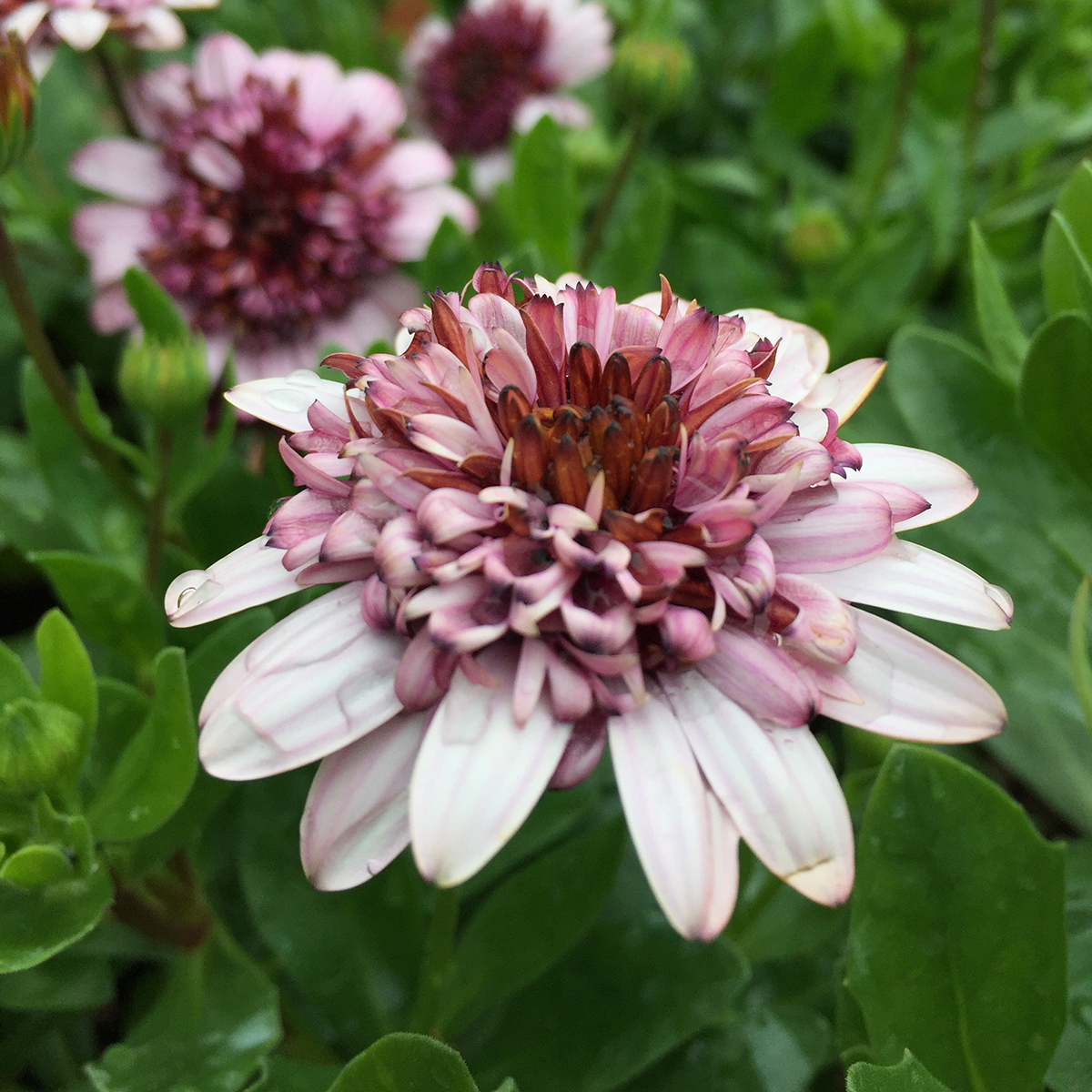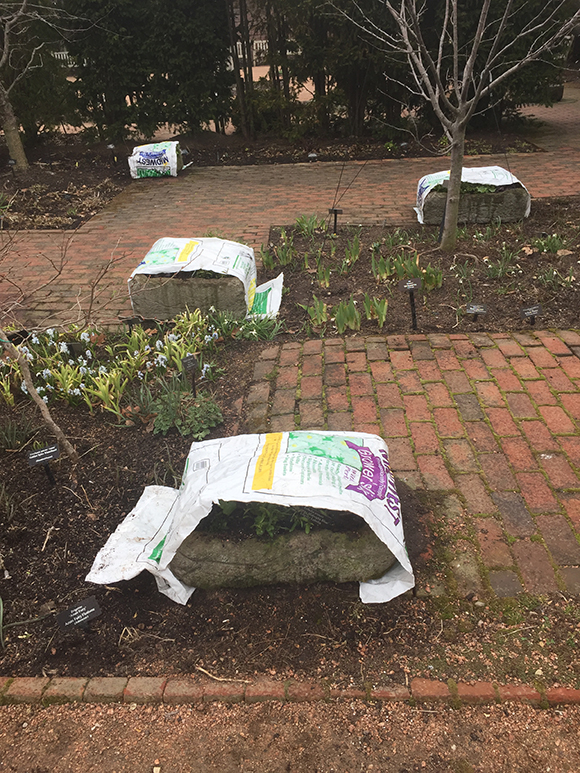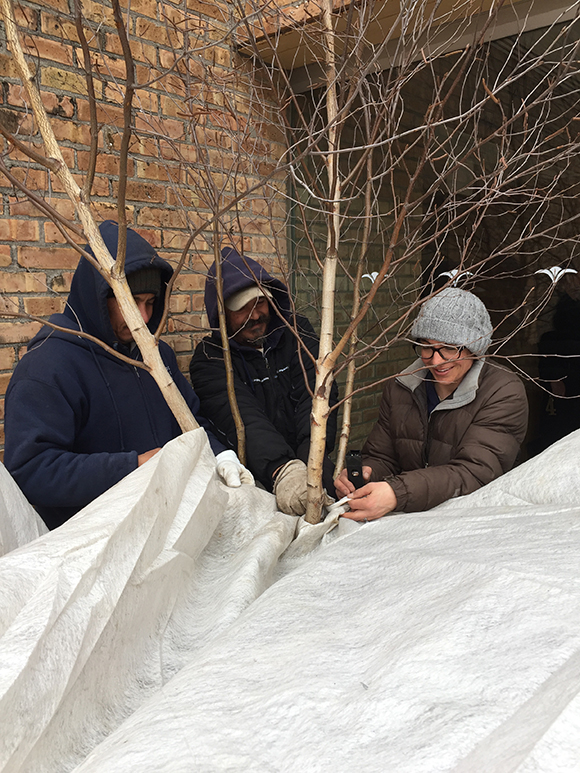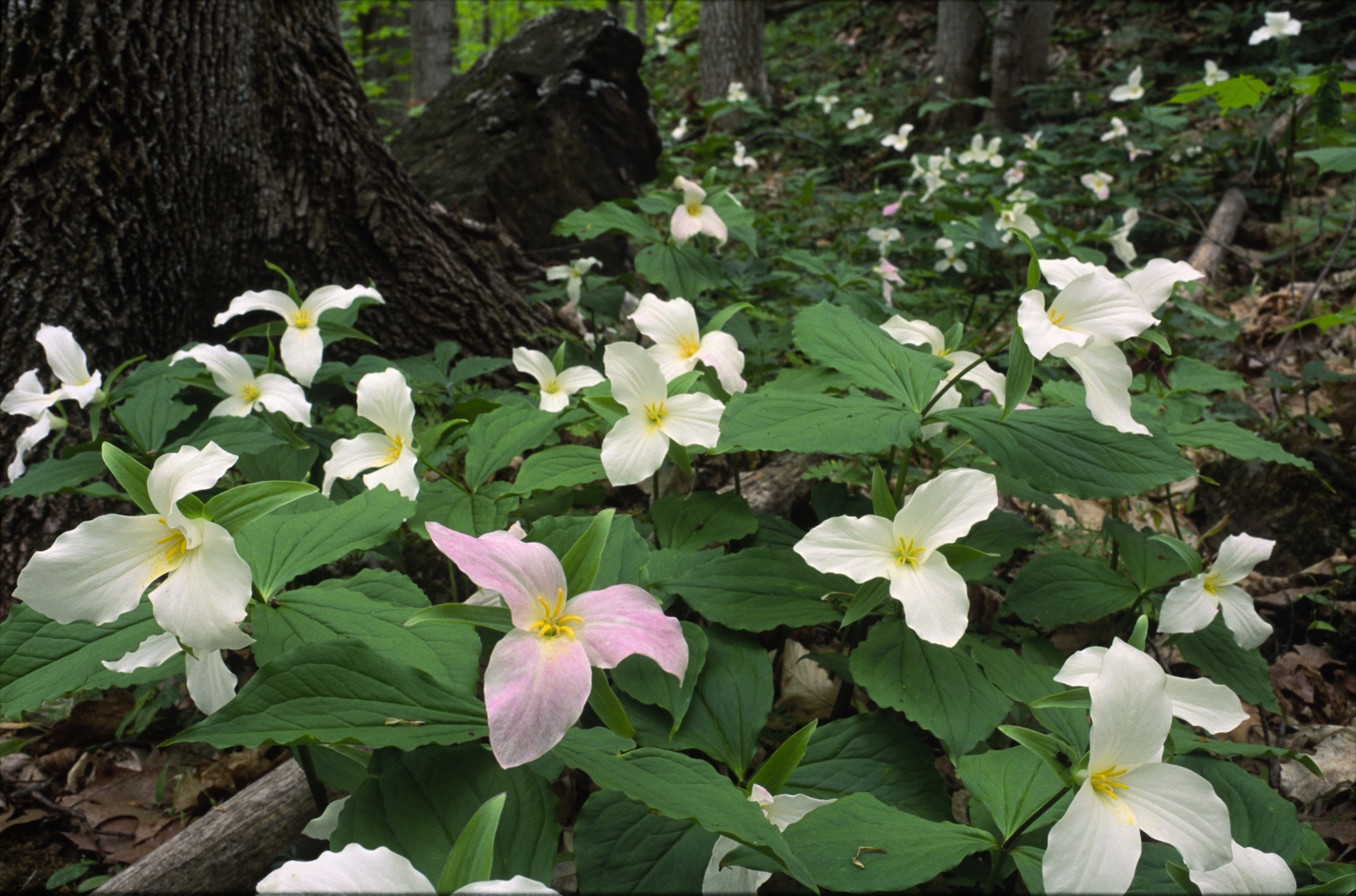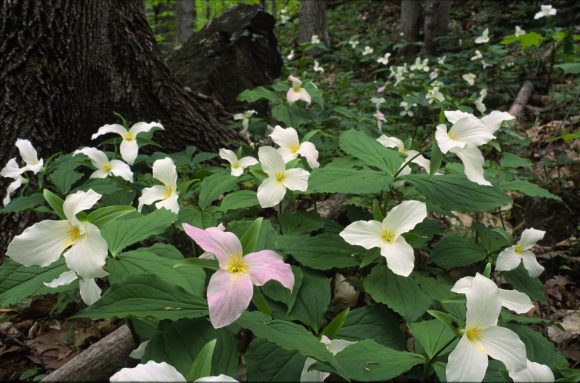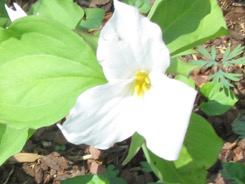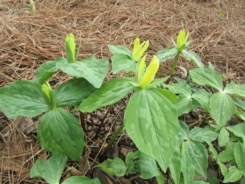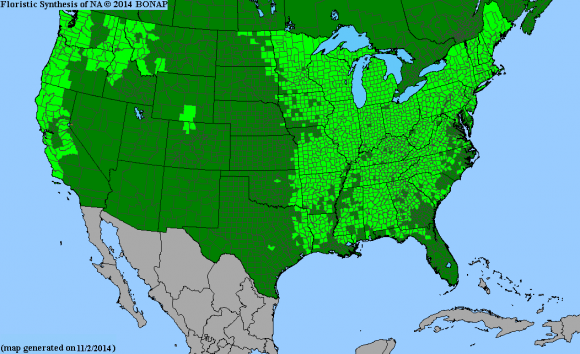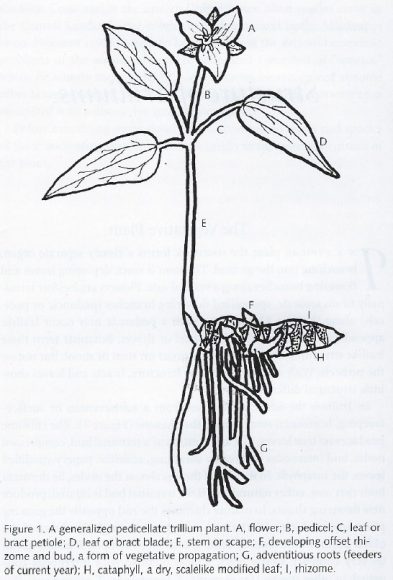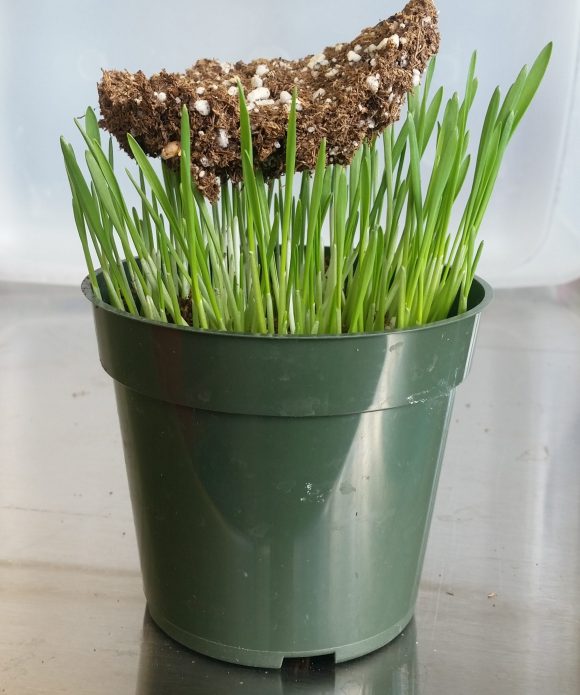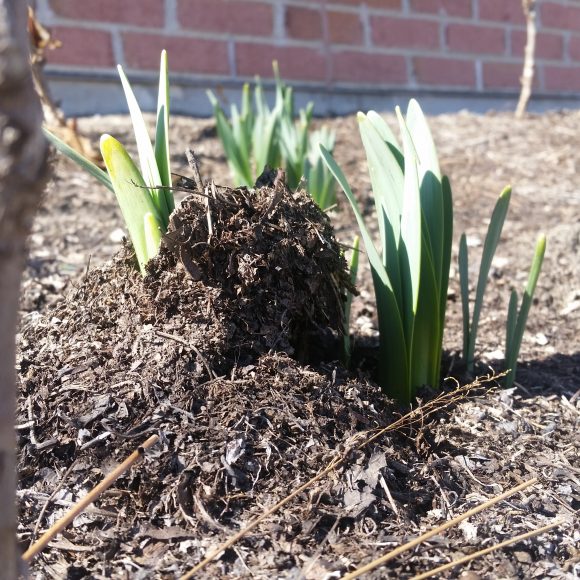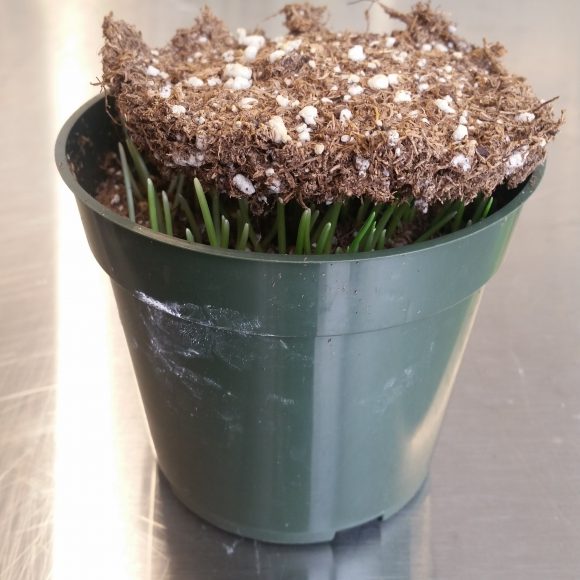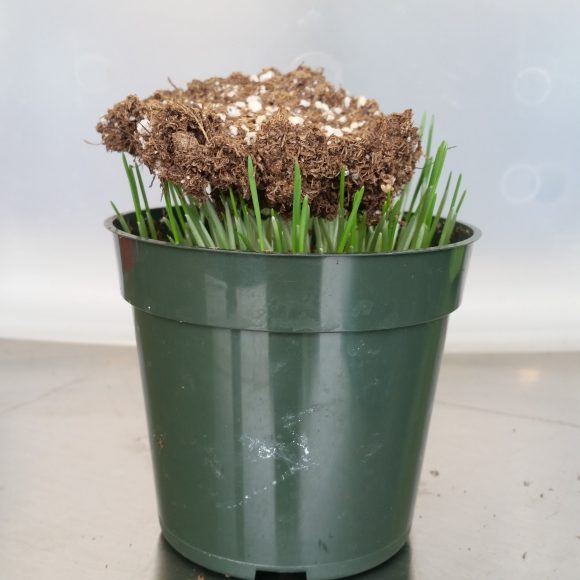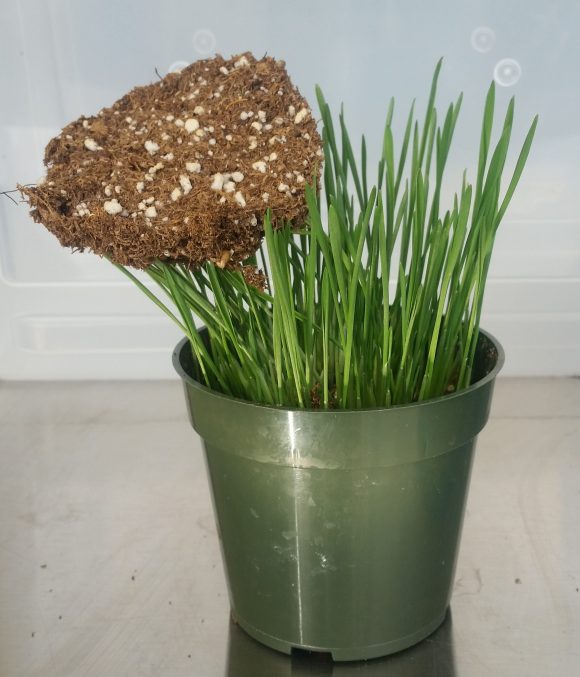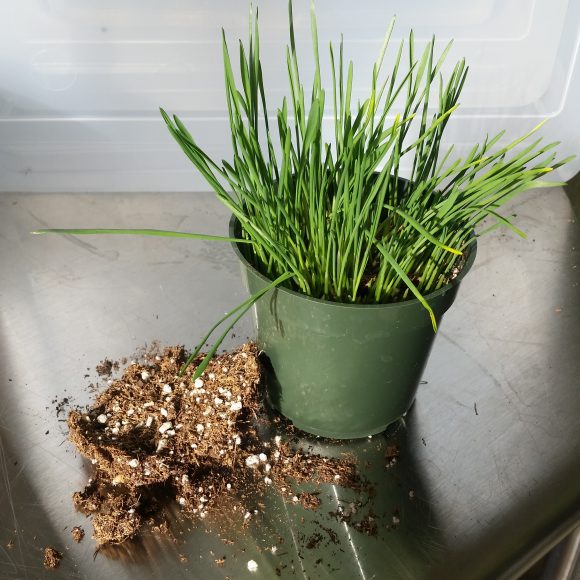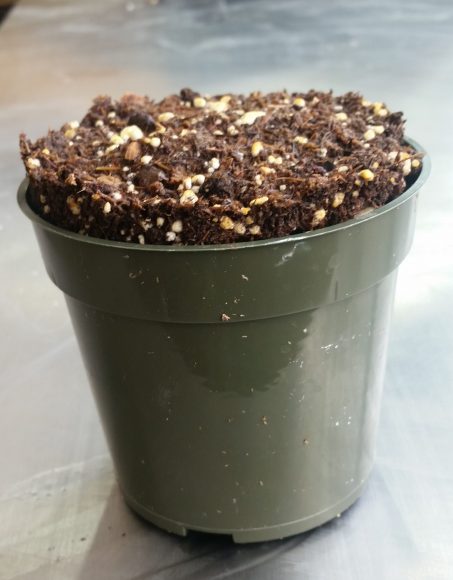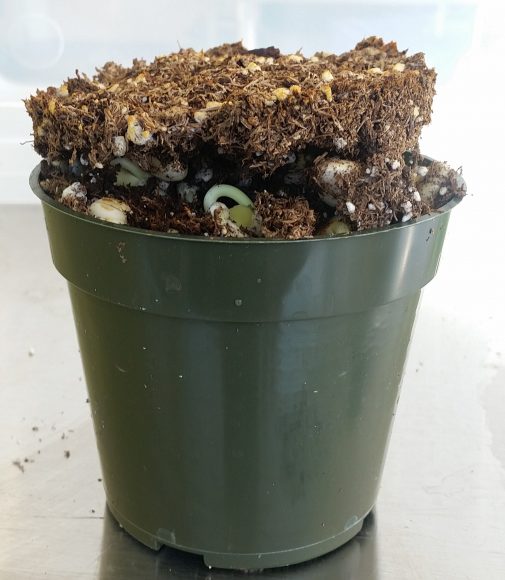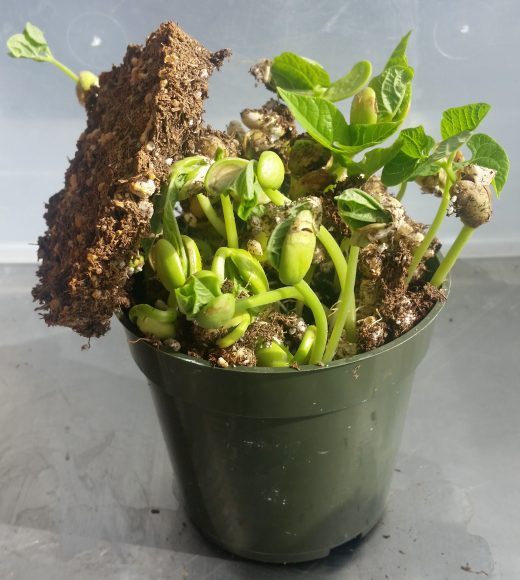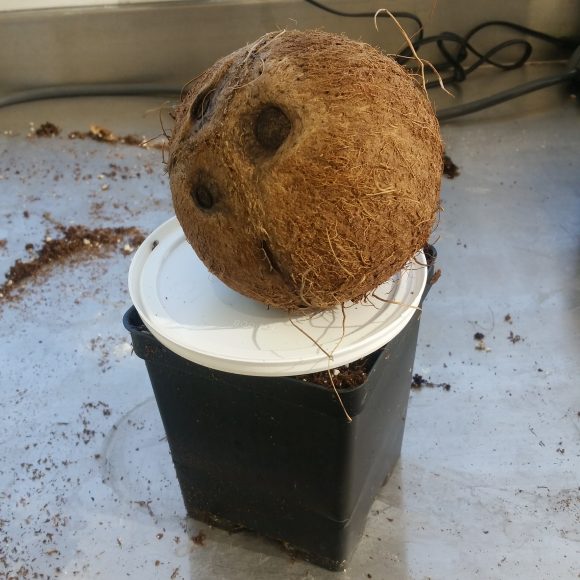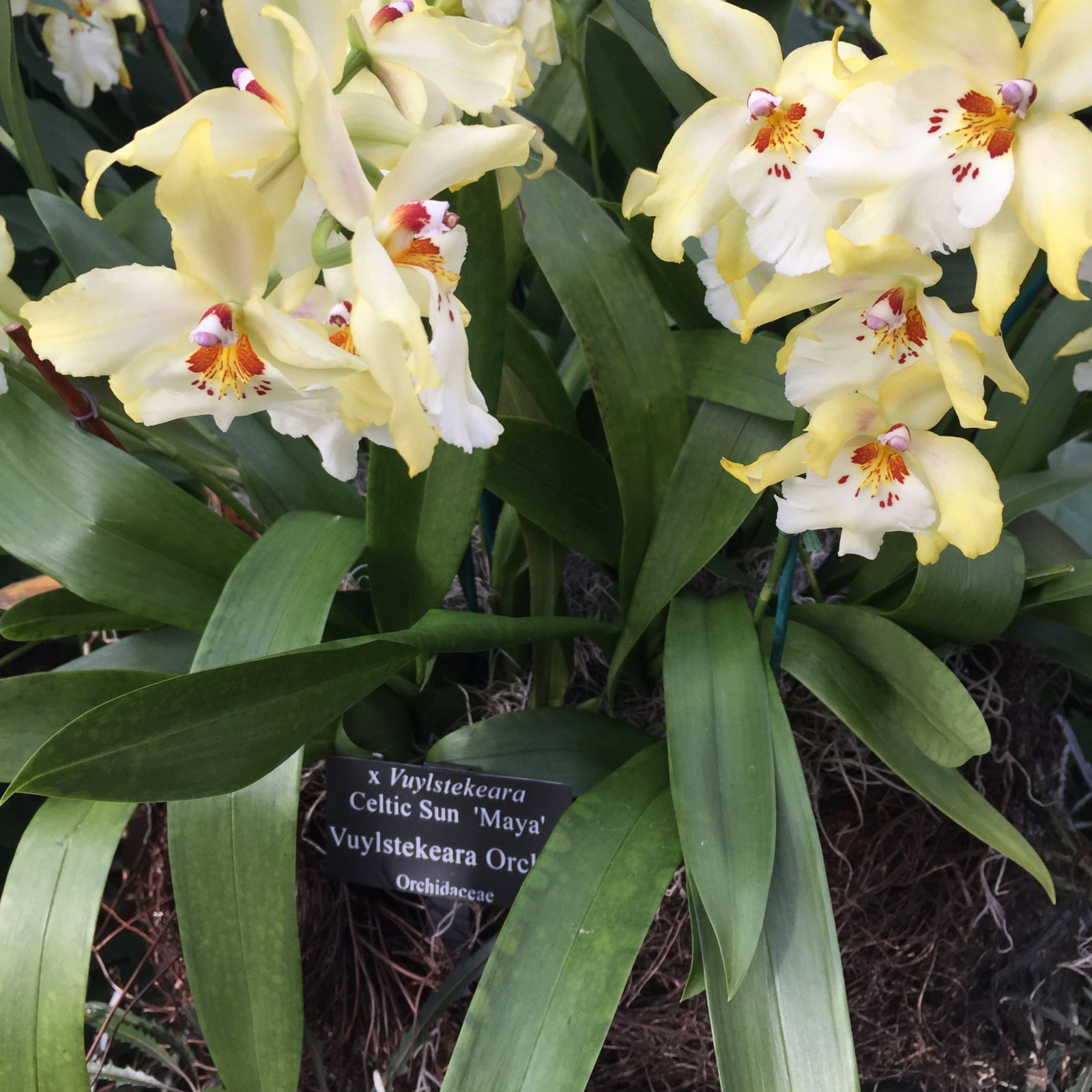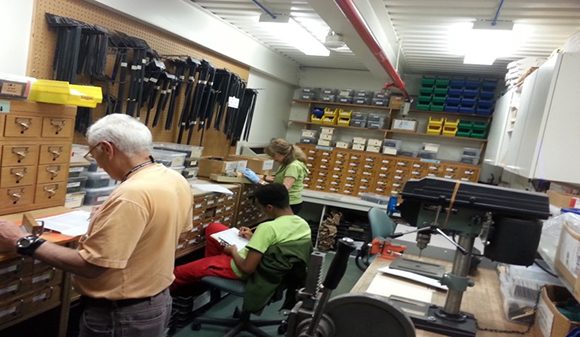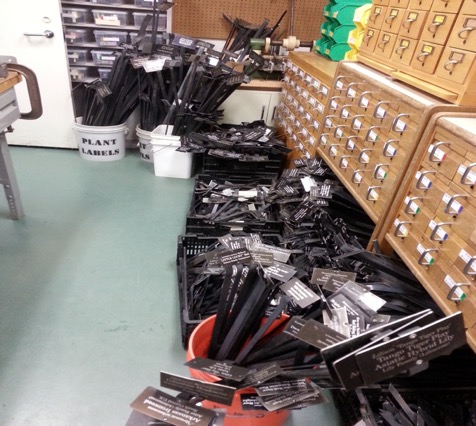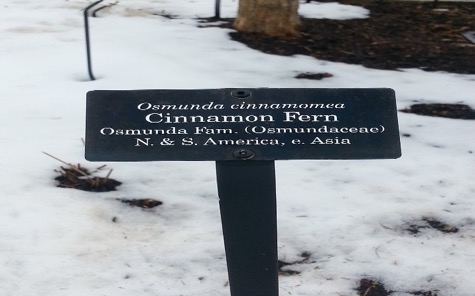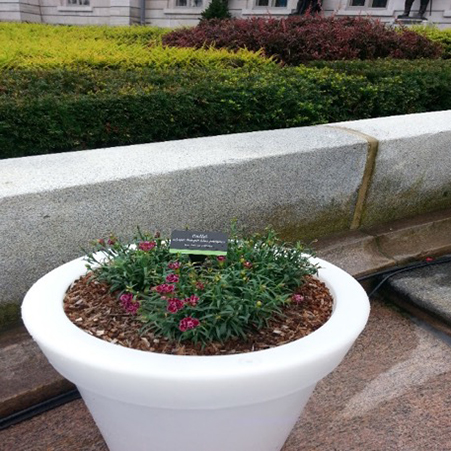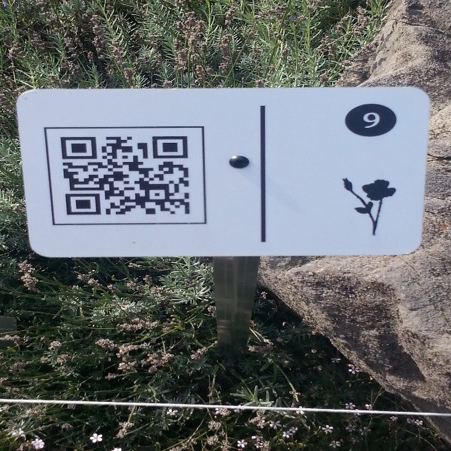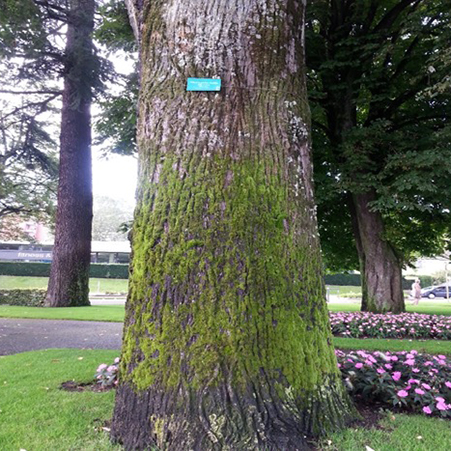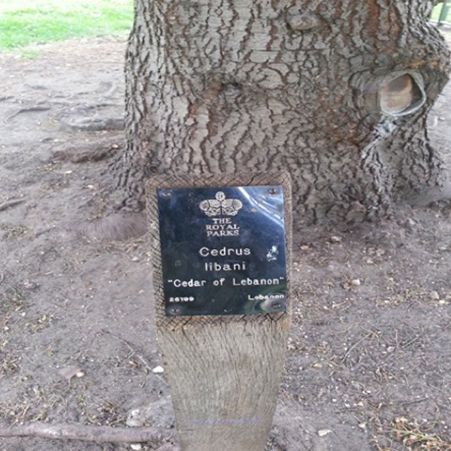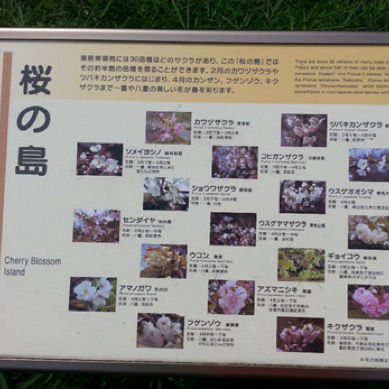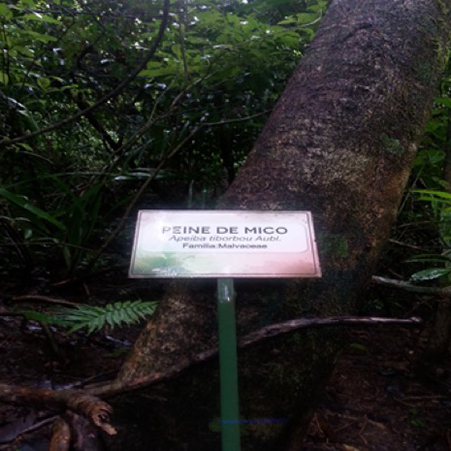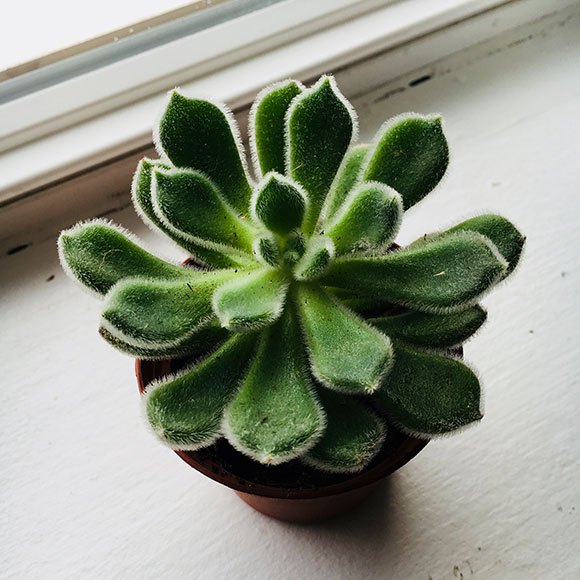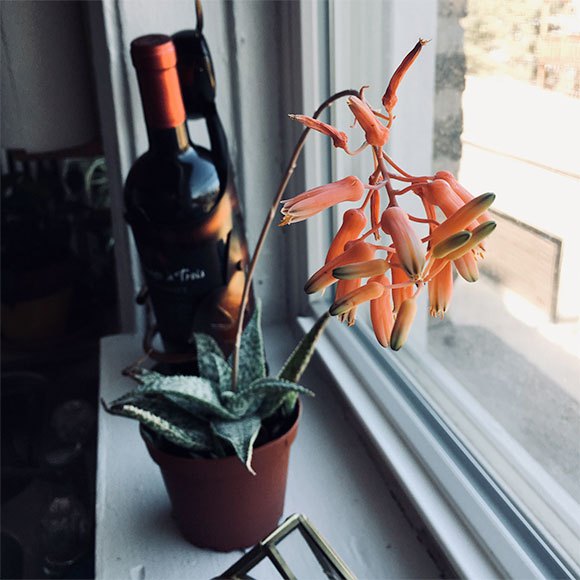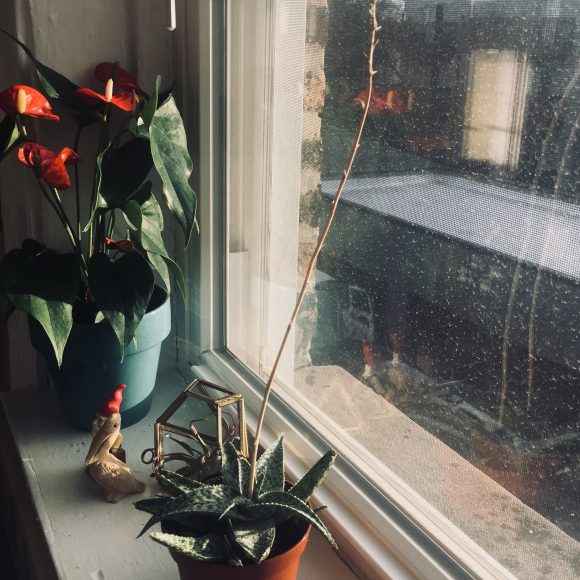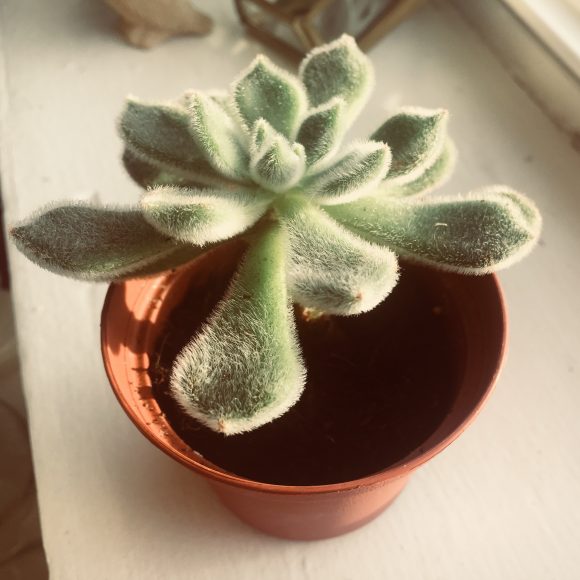It’s that time of year when the sun finally comes out and temperatures go up, allowing you to get some outdoor planting done. But beware the fickle Chicago spring.
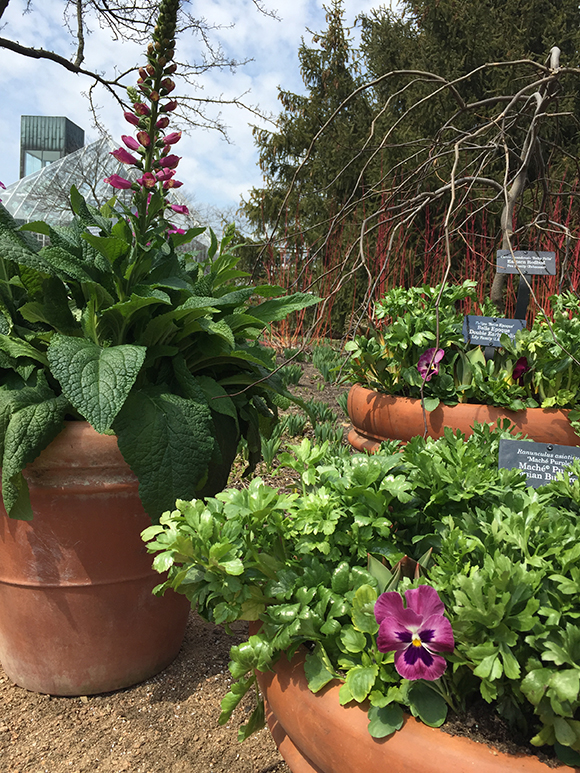
Perfect gardening days are sometimes followed by colder temperatures that can wreak havoc on your newly installed containers. Horticulturist Heather Sherwood shared some of the things she does to protect plants that the home gardener may want to do as well.
- Move containers inside. Sherwood’s team planted large containers with a mix of flowers, including foxglove and Persian buttercup. In cold weather, the containers are moved into McGinley Pavilion, which has plastic draping down to keep the cold out. If you’ve started to create containers for your back porch or balcony, bring them inside. Even an uninsulated shed offers more protection than none.
- Not all containers are easy to relocate indoors. Some of our spring annual display containers weigh more than 200 pounds, and stay where they are through the cold. Sherwood covers the ones that can’t be moved with plastic, including used soil bags. If you were planning on just disposing of your empty soil bags, reuse them this way to protect your containers instead. Sherwood also recommends covering plants with old bedding, especially fitted sheets. They fit snugly around the bottom of the containers and keep out the cold air.
- If you do cover your containers, it may be helpful to prop up the covering with bamboo poles. The covering shouldn’t touch the plants, because it can weigh down and crush any leaves or fresh blooms. And if the temperatures drop too low, the covering can freeze to the plant and damage it. Circulation is always good, so give your plants “breathing room” if you cover them.
- Leave some plants alone. Some flowers don’t need your fretting. Pansies will likely withstand colder temperatures. Daffodils and tulips, some of which haven’t even emerged yet, will probably also be fine. Focus your efforts on protecting the more vulnerable flowers and let the hardy ones tough out the cold.
- Protect the containers. Your plants won’t stand a chance if you don’t also protect the containers you’ve planted them in. If you use terra cotta pots, keep them dry in cold temperatures. If they’re wet and then freeze, cracks can form. Containers made from fiberglass and plastic will degrade over time if they’re in direct sunlight, so check these for damage and move inside if you’re unsure of their durability. Your reused containers will last much longer if you have stored them out of the elements over winter. (Make a mental note for next winter.)
Still not sure what to do with your containers? Contact Plant Information at the Garden at (847) 835-0972 or plantinfo@chicagobotanic.org with any questions. The master gardeners and horticulture specialists who run this service can help you figure out what’s best for your plants.
©2018 Chicago Botanic Garden and my.chicagobotanic.org

